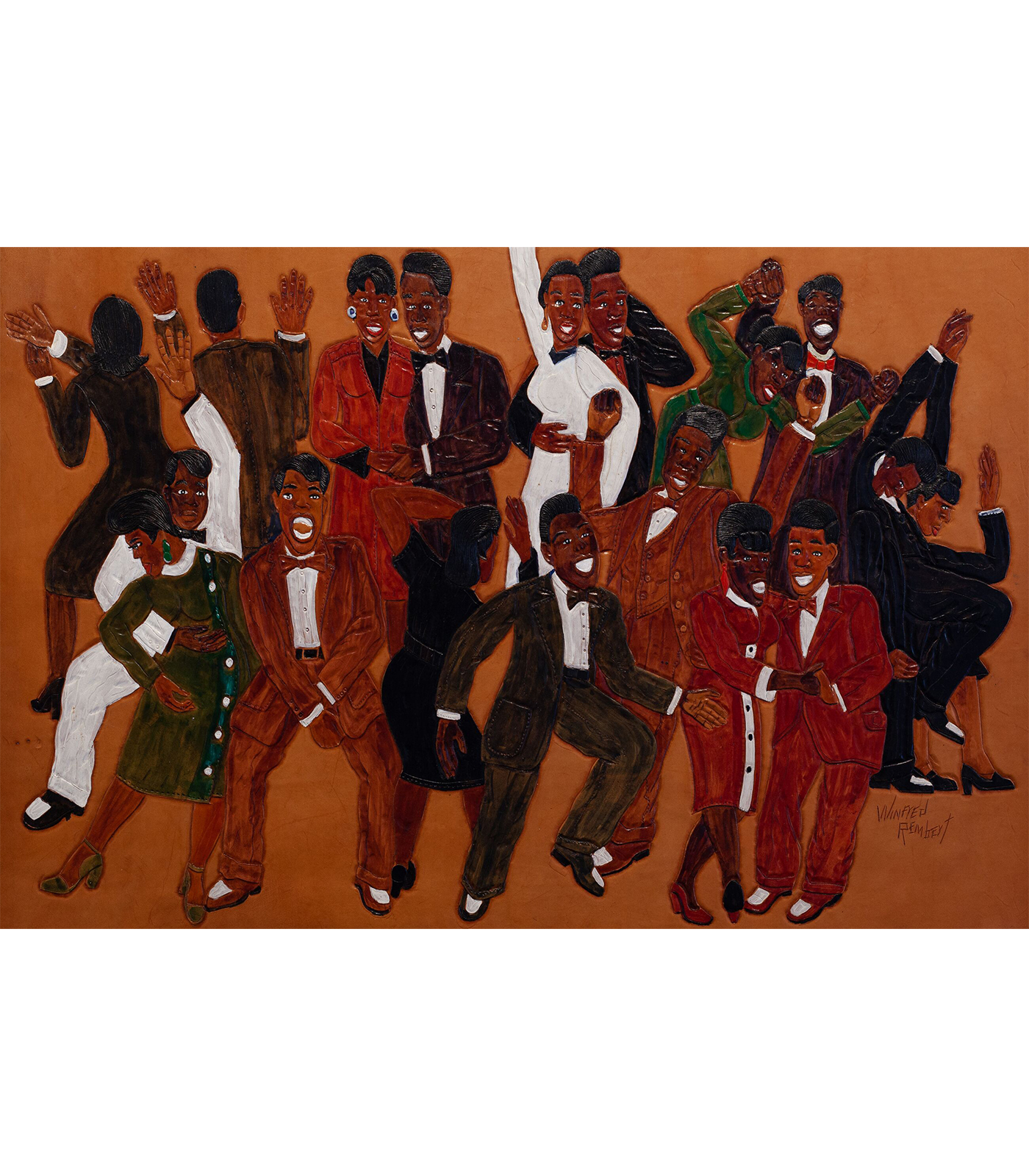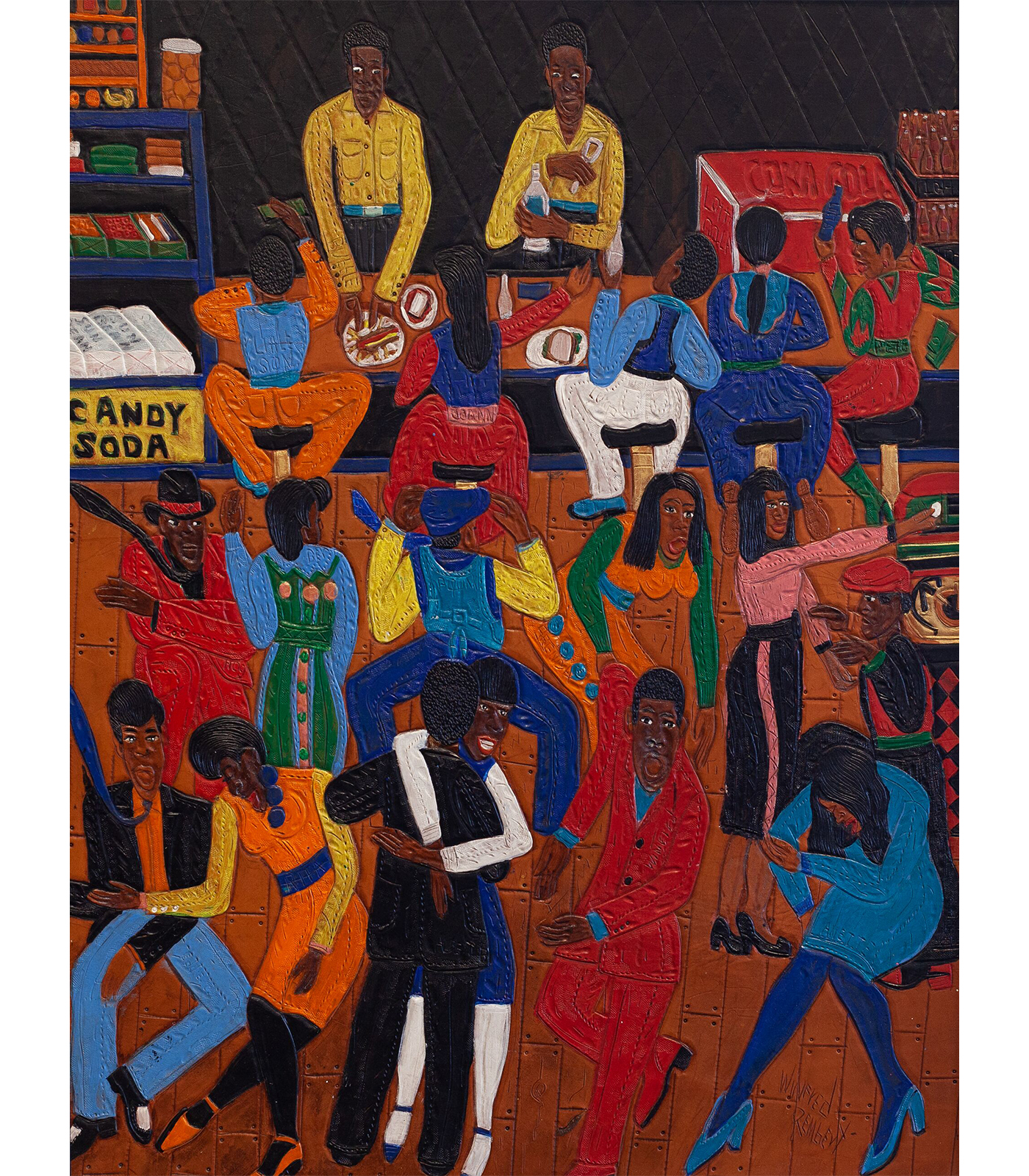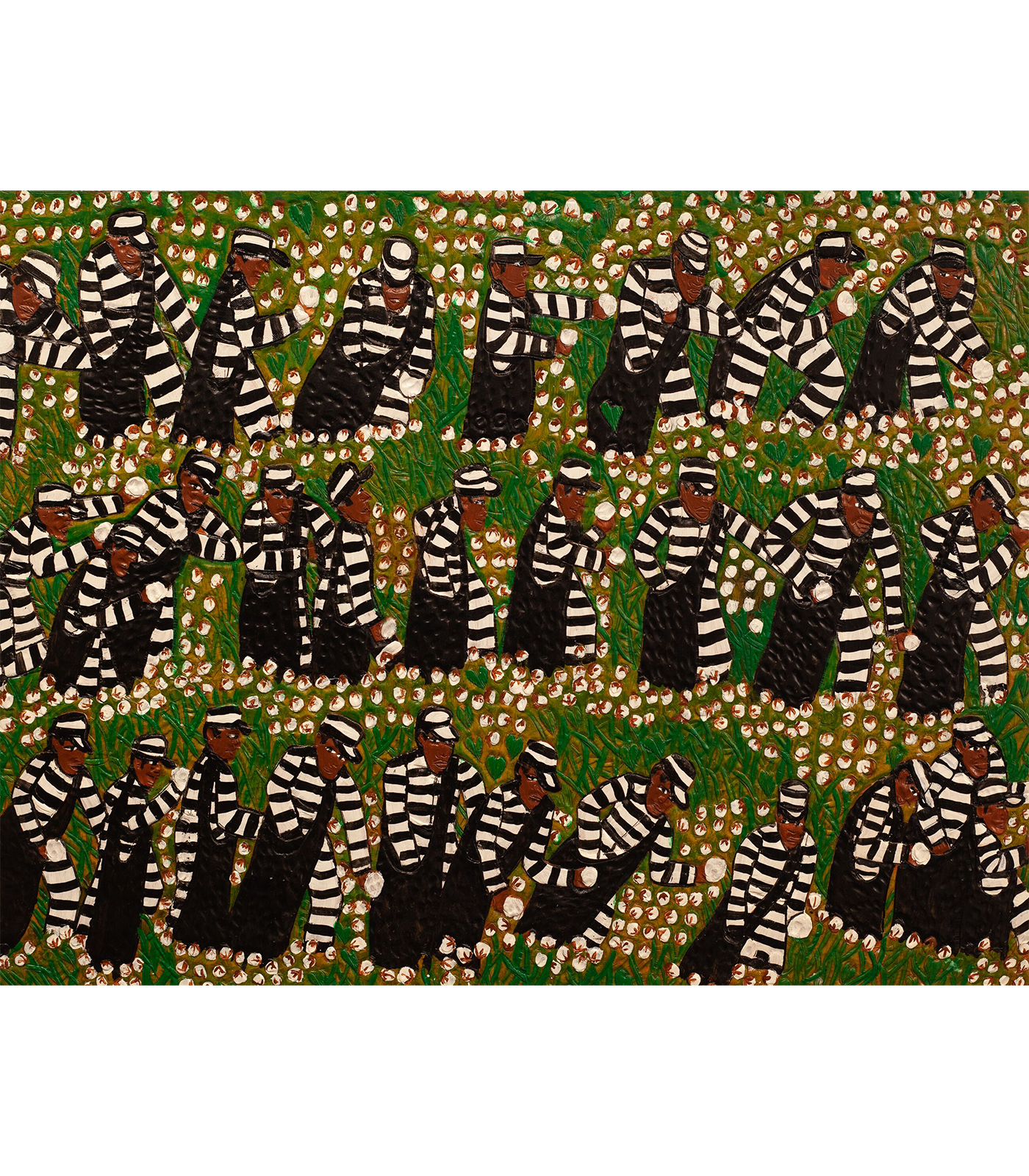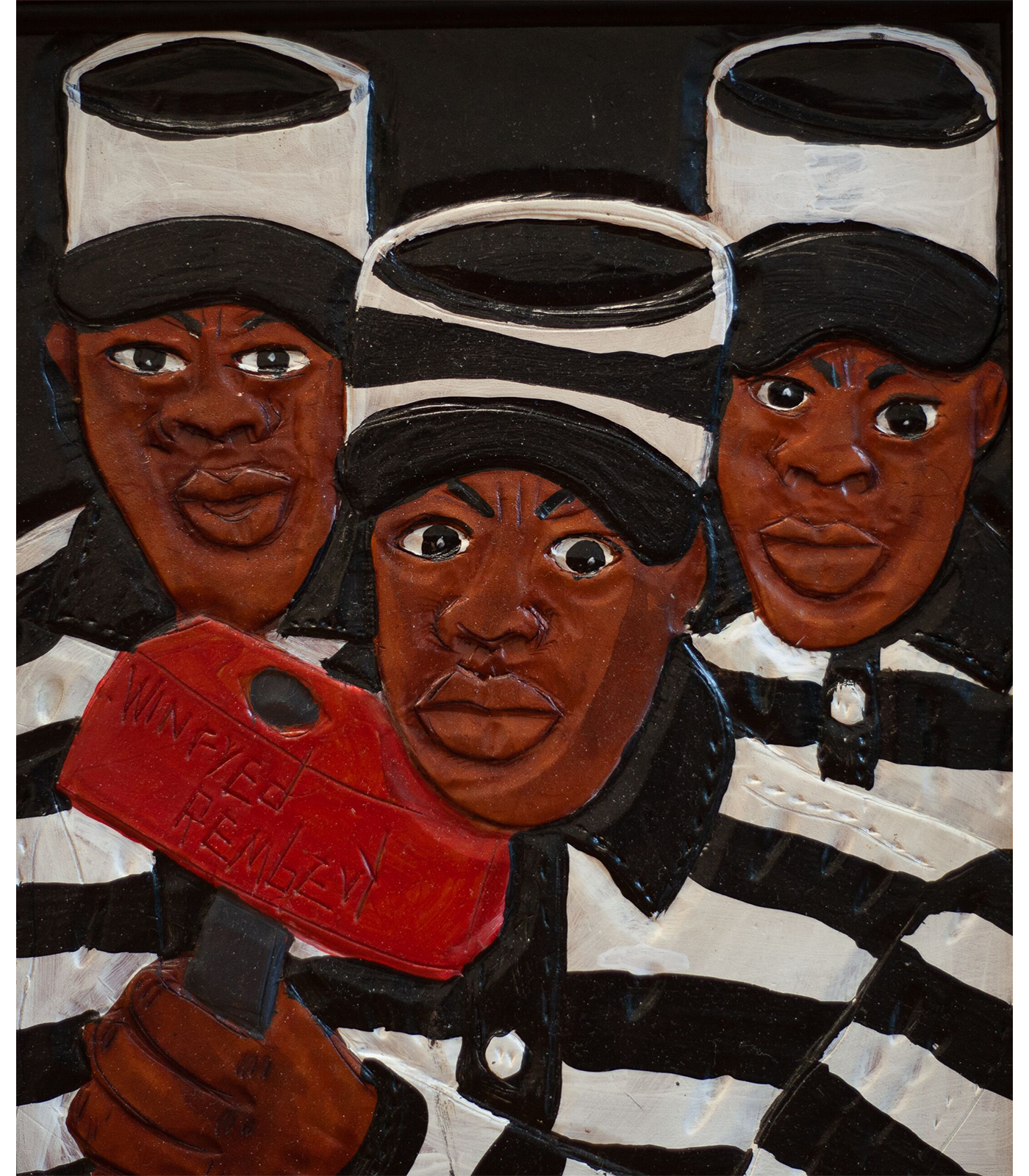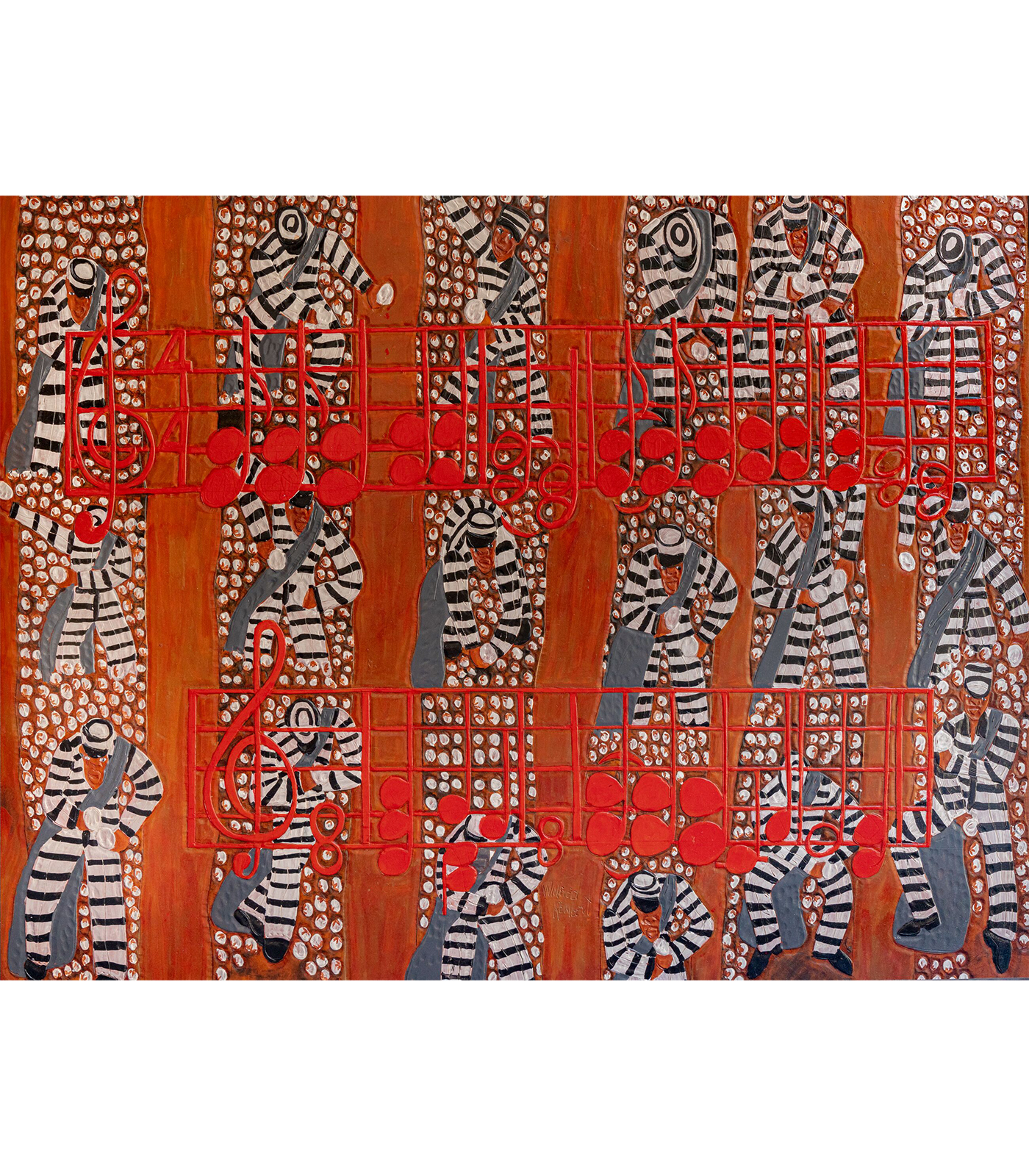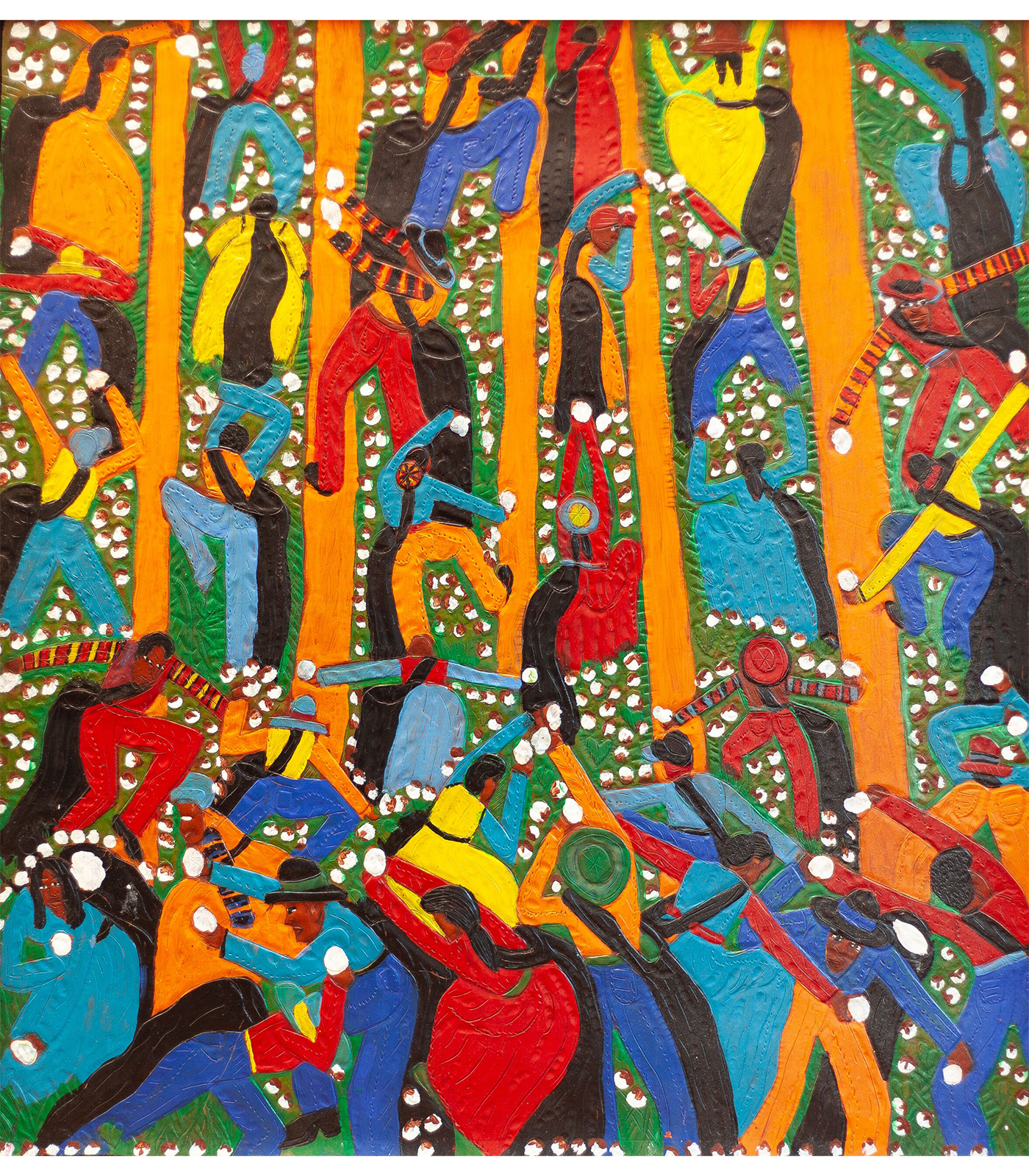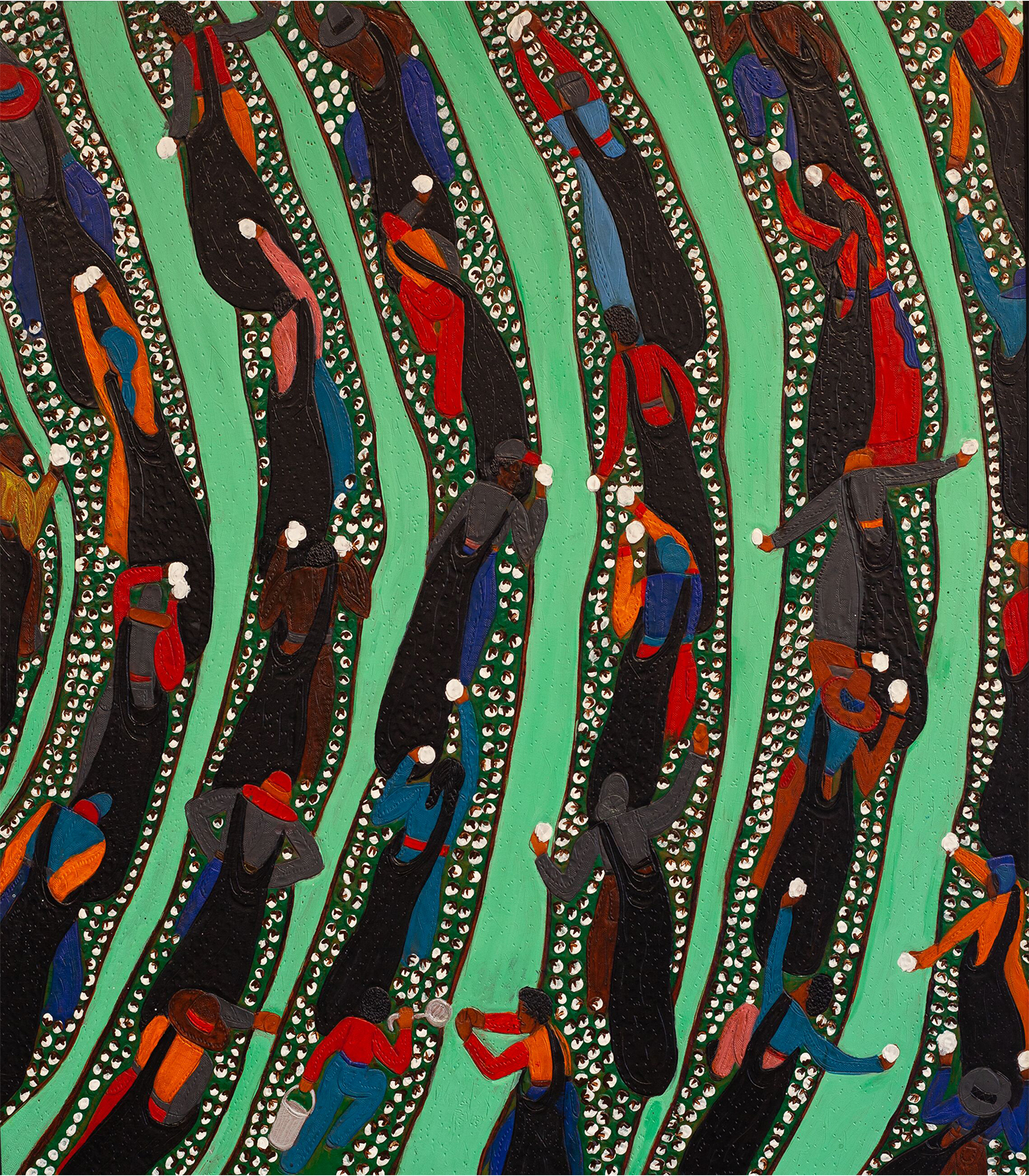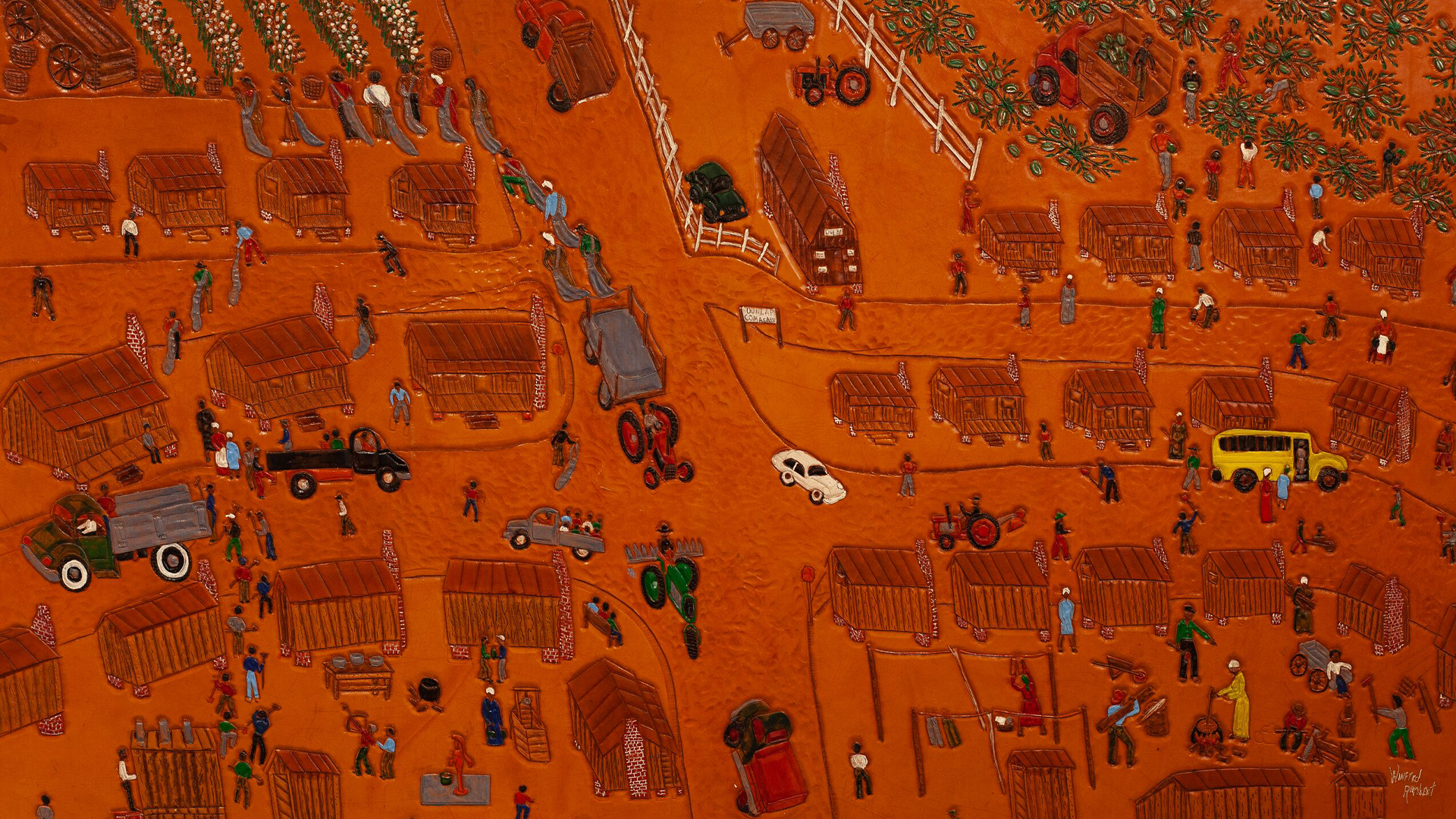
Winfred Rembert
All of Me
23 February – 22 April 2023
New York, 69th Street
Hauser & Wirth presents ‘All of Me,’ its first exhibition of works by late American artist Winfred Rembert (1945-2021), in collaboration with Fort Gansevoort. Occupying all three floors of the gallery’s 69th Street location, this immersive tribute to Rembert’s incredible life and artistry includes more than 40 works made in his signature medium of carved, tooled and painted leather, including several never before seen. Produced during the last three decades of his life, the objects on view offer a striking visual memoir and will take visitors on a journey through key chapters of the artist’s personal history.
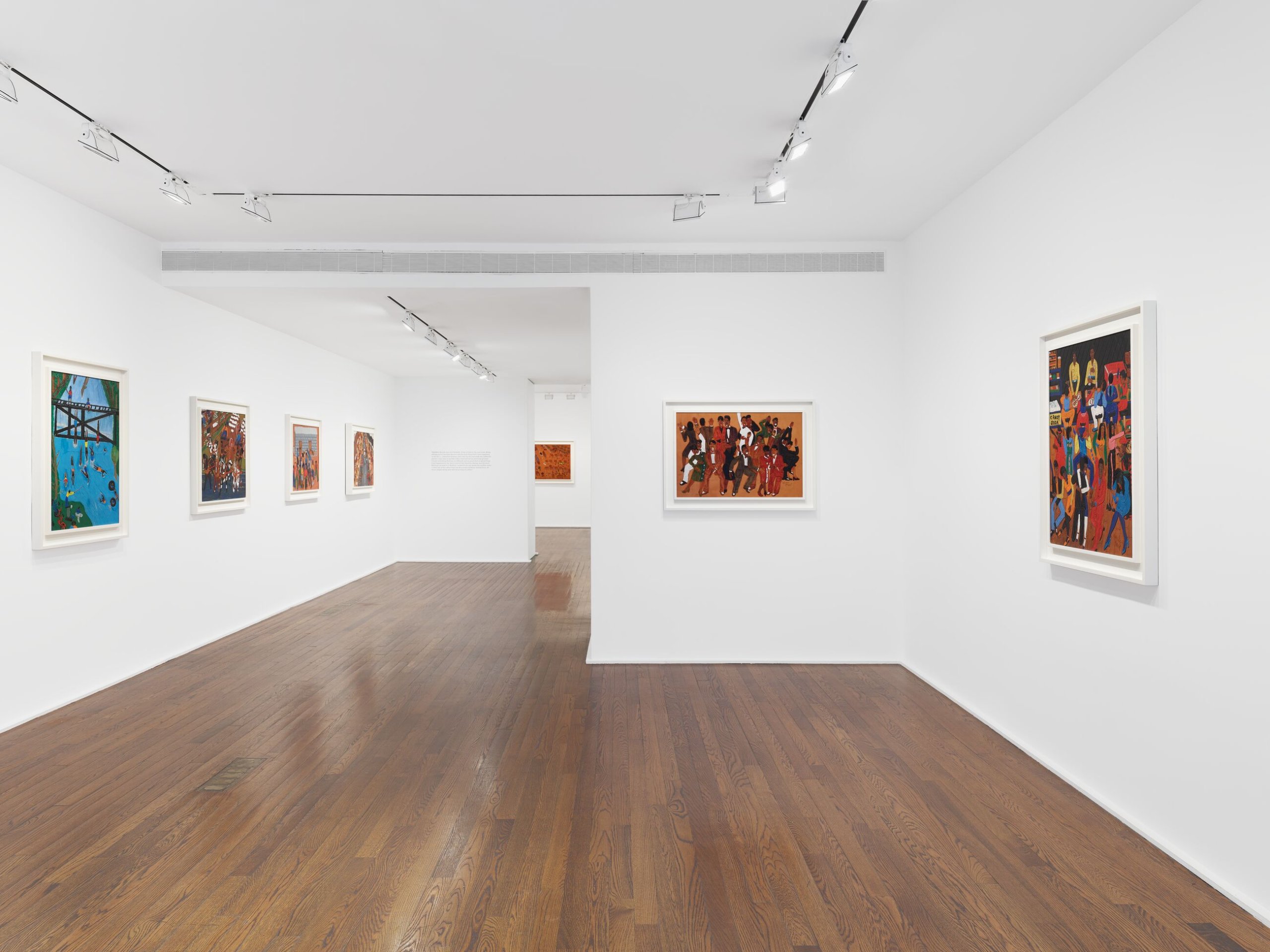
Rembert’s paintings recognize the people and places—from pool halls, juke joints, and civil rights protests, to cotton fields and chain gangs—that shaped his worldview, uniquely rendered through technical mastery of his chosen medium into something arresting and astonishing.
‘Hamilton Avenue was just fantastic. It has a hold on me, even now. Being introduced to Hamilton Avenue was the best thing that’s ever happened in my life. [...] Hamilton Avenue came into my life and made me a different person. I was able to put the cotton field behind me and never go back. I found something that was so different and so good. A lot of good things have happened to me, but it seemed like Hamilton Avenue was the best. Nothing can match it. Nothing. I walked from one world into another when I came out of the cotton field and discovered all those smiling faces, all those people doing well and not picking no cotton.’
—Winfred Rembert
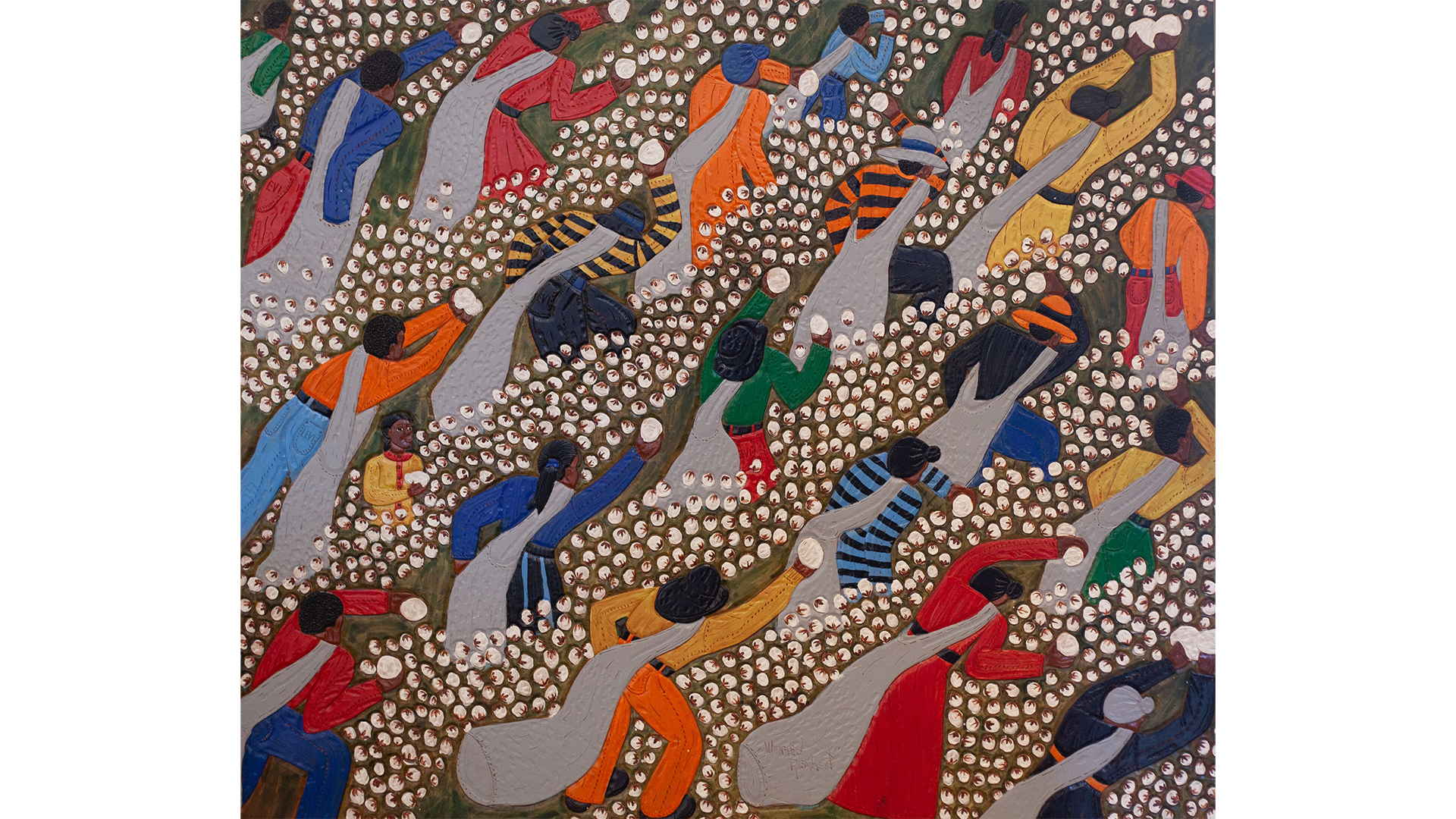
Born in 1945 in Americus, Georgia, Winfred Rembert was a son of the ‘Jim Crow’ American South. In 1965, he was thrown in jail after a Civil Rights demonstration, and two years later survived a near lynching. This pivotal, harrowing experience was followed by seven years in the Georgia prison system. During this time, Rembert was taught how to tool leather from a fellow inmate named ‘T. J. the Tooler,’ who was allowed to create small functional leather items such as wallets. After his release from prison, Rembert moved North, eventually settling in New Haven, Connecticut where he lived for the remainder of his life.
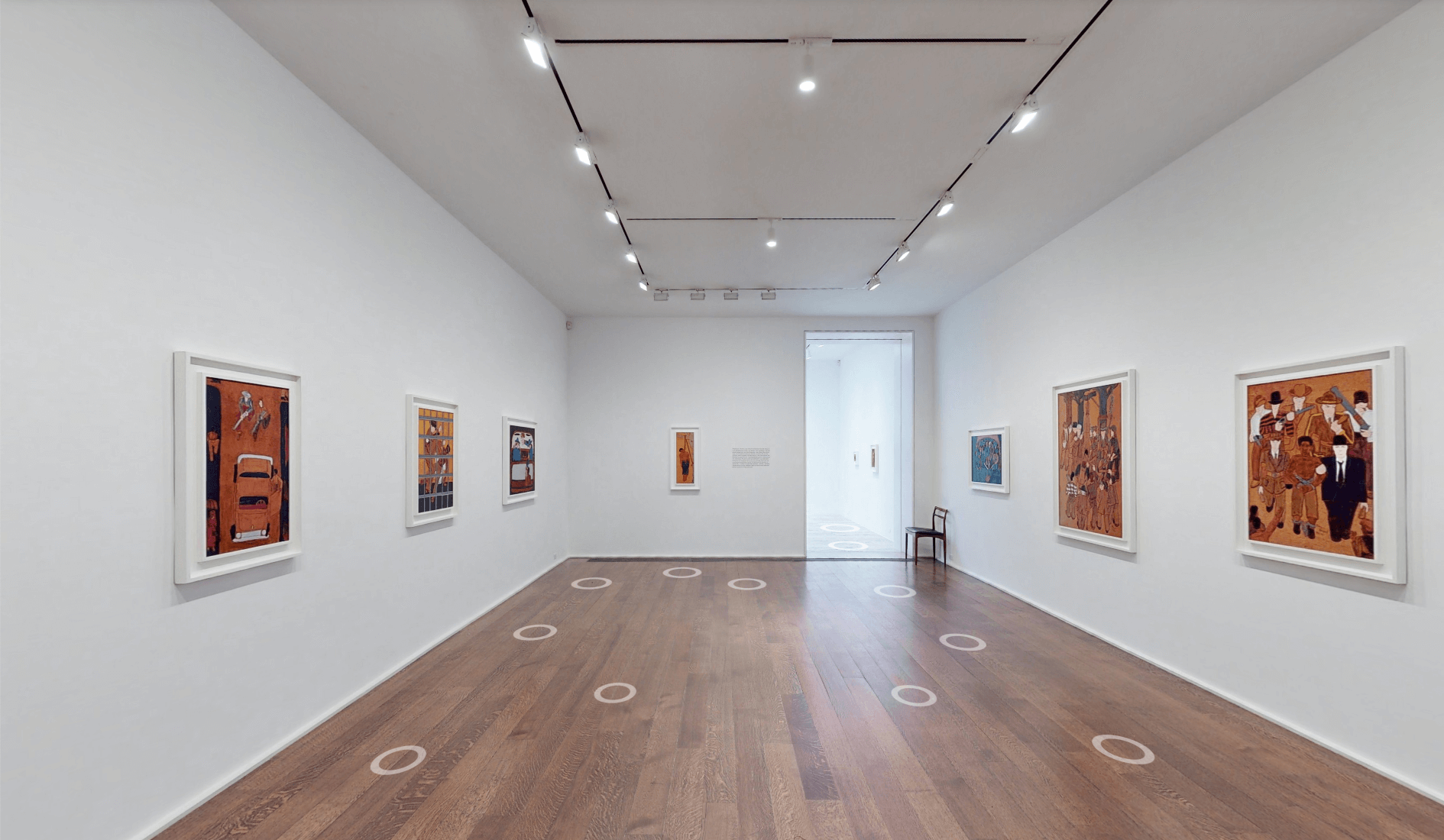
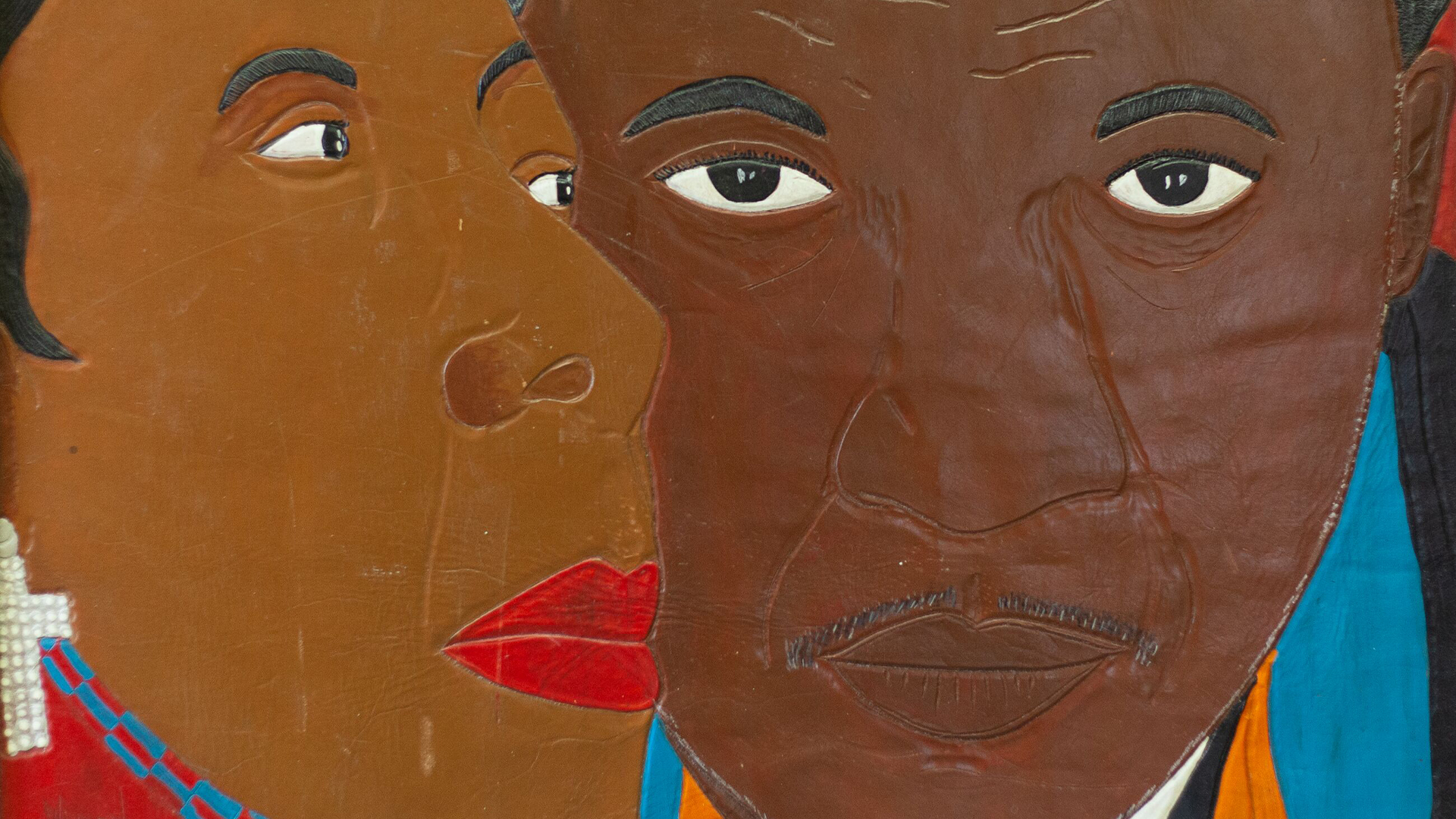
In 1996, at the age of 51, and with encouragement from his wife Patsy, he began to document his memories of life in Georgia in an outpouring of incredible narrative paintings. One section of the exhibition focuses exclusively upon Rembert’s paintings of the women in his life, whose love and companionship shaped his spirit. Rembert’s wife Patsy is affectionately portrayed in the double portrait ‘Patsy and Me’ (2000), a testament to their enduring love and a recognition of Patsy’s unwavering encouragement of his talents, as it was Patsy who encouraged Rembert to begin tooling and painting the story of his life on leather, thereby transforming his pain into redemption.

‘Cain’t to Cain’t II’ (2016) is one of many works that evoke the long hours Rembert toiled picking cotton. In this vibrantly colored landscape, workers on the left and right sides of the composition are obscured by dark bands of dye representing dawn and dusk, because as Rembert said, ‘You can’t see when you go, and you can’t see when you come back.’
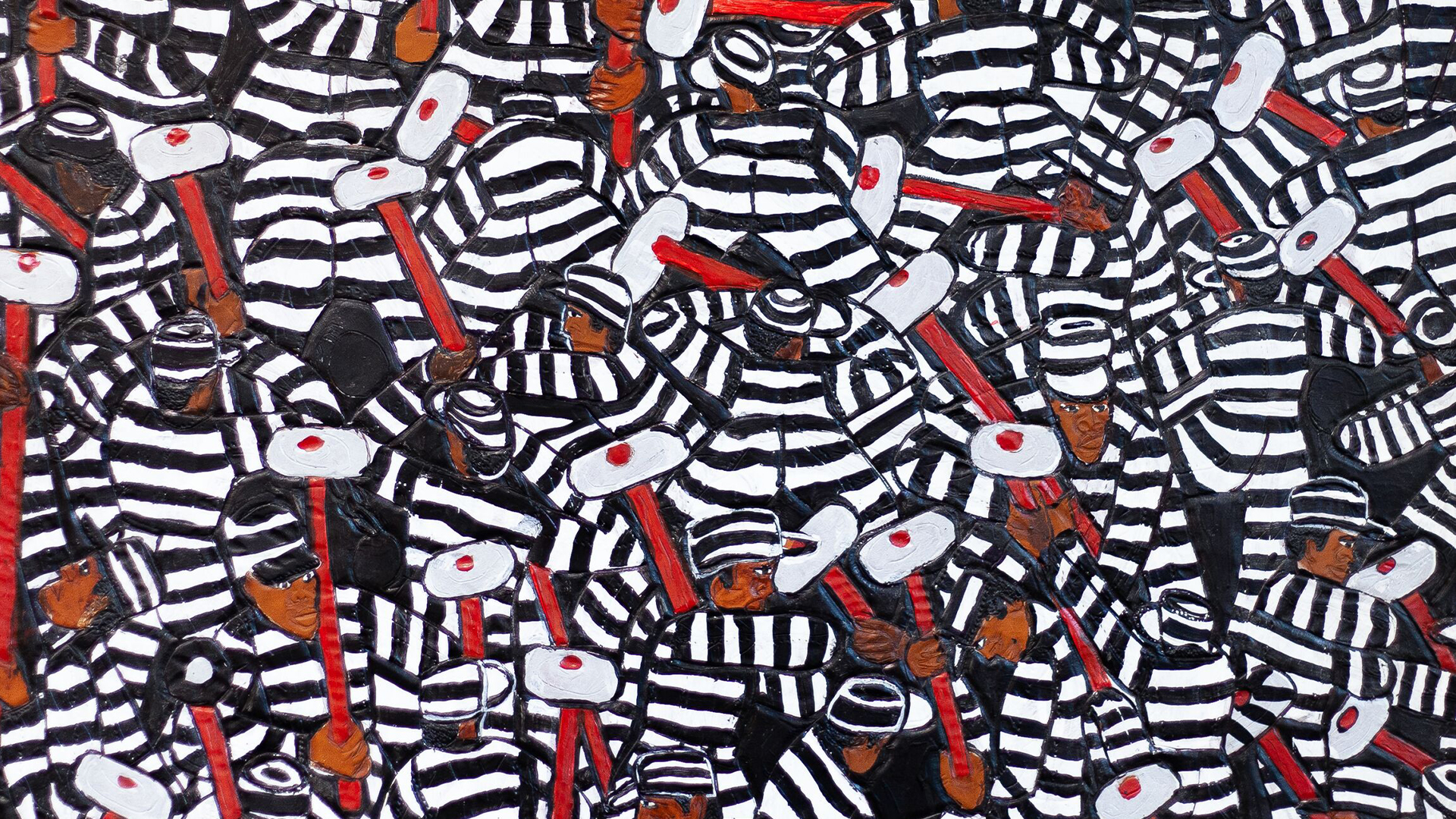
Adjacent to this painting, ‘All of Me’ (Date unknown), is one of the most complex of Rembert’s entire body of work. Recalling his time on a chain gang, this daring work teems with the bent bodies of men in black-and-white striped prison uniforms while working on a chain gang.
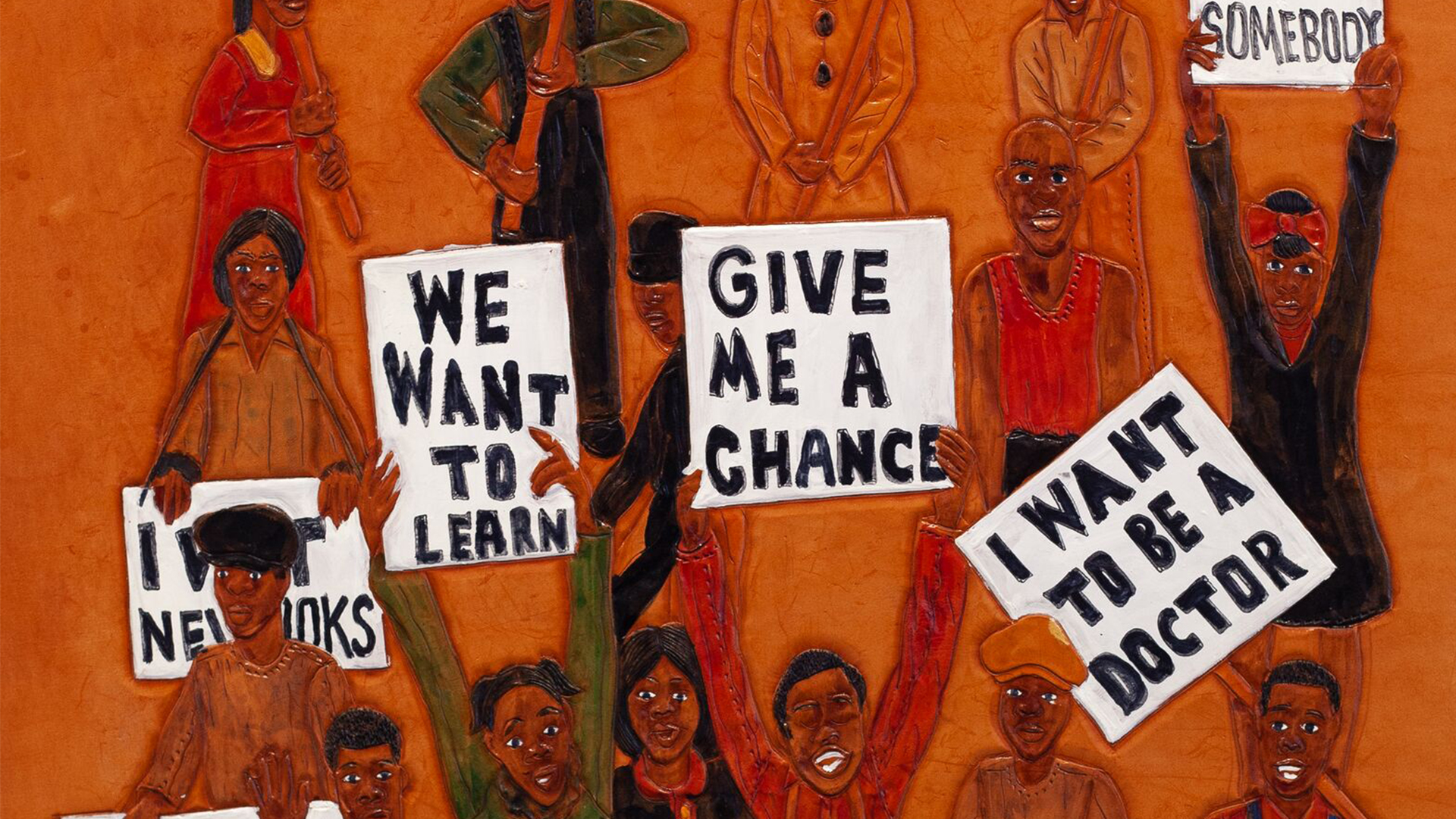
The painting titled ‘Civil Rights – I Have A Dream’ (1999) recounts an experience from 1965, that marked the beginning of the most devastating period of Rembert’s life. Attacked during a peaceful demonstration in Georgia, he fled in a stolen car, only to be arrested and thrown into jail. After a year without charges, Rembert managed to escape, but was caught and put inside the trunk of a police car, a chilling scene that the artist revisited in the work titled, ‘Inside the Trunk’ (2014).
‘Thank God I’m alive, and while I’m still alive I can talk about it. I can talk about surviving. I am history. I am a witness. I can tell about being almost lynched. And when I die, I didn’t die by the rope. I just died from being an old man. I lived my life out. My children, when I’m gone, can read about it, and that picture will be there to speak for me. If you stand and look at it, the picture will talk to you. My great-great- grandchildren can walk up to that picture a hundred years from now and say, ‘That was my great-great- grandfather. He did this picture and the story is about him.’ If I didn’t survive that lynching, I wouldn’t be here. There’d be no picture, no book—and no one to tell or read the things I’ve lived through and seen.’
—Winfred Rembert
About the Artist
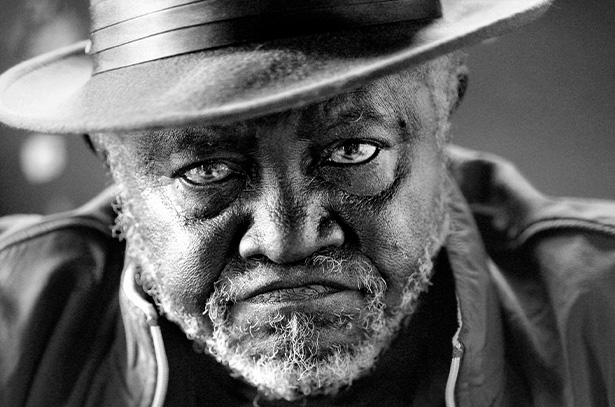
Winfred Rembert
Winfred Rembert (1945 – 2021) was born in Americus, Georgia and grew up in nearby Cuthbert, a rural railroad town located in the southwest region of the state, once at the center of the Deep South’s plantation economy. Living in Cuthbert during the era of Jim Crow, Rembert was exposed at a young age to the exploitative practices of the sharecropping system. Spending much of his childhood alongside family members working in the fields, Rembert received a limited education. Despite the infrequency of his attendance, a dedicated teacher by the name of Miss Prather recognized Rembert’s artistic talent and encouraged him to express his creativity through drawing.
As a teenager, Rembert was deeply influenced by the burgeoning Civil Rights Movement in Americus, where his active participation led to confrontations with law enforcement. In 1965, while attending a peaceful protest which was attacked by white antagonists, he fled from the assailants in a stolen car and was subsequently arrested for the theft. In 1967, still incarcerated while awaiting charges, Rembert escaped from jail. Following his ensuing capture by an angry white mob, Rembert survived a near-lynching. For the next seven years of his life, he was transferred to multiple penitentiaries within the Georgia prison system, enduring taxing physical labor while working on various chain gangs—a harrowing experience that would later prove central to the narrative of his extraordinary art.
Rembert learned how to tool and craft leather from a fellow prisoner—the technique he would later use to share his story with the world. Following his release from prison in 1974, Rembert married Patsy Gammage; the couple eventually settled in New Haven, Connecticut, and raised a family there. At the age of fifty-one, with his wife’s encouragement, Rembert began a full-time artistic practice. Combining his mastery of leather working with his skilled draftsmanship, he built a unique body of autobiographical paintings and continued to make art for nearly twenty-five years, before his death on March 31, 2021, at the age of 75.
Over the course of his career, Rembert embraced a variety of styles and pictorial strategies. His works range from purely illustrative to extremely complex compositions that verge on abstraction. In many of the early paintings, the materiality of Rembert’s media is immediately apparent. In such works, he rendered his figures in muted tones to compliment the natural color of the leather backgrounds. In other works, bright-colored pigments cover the entire surface of densely packed compositions. Over time, Rembert’s compositions accrued as a chronicle of his life, through pictorial landscapes of cotton fields and rhythmic compositions of field workers, freedom marches, church services, juke joints, and chain gangs in the Jim Crow south. In its narrative and formal qualities, Rembert’s work, with its corporeal texture, intense color, powerful patterns, and depictions of both hardship and pleasure, takes its place among the oeuvres of the most influential American figurative masters.
The York Square Cinema in New Haven launched a solo exhibition of Rembert’s leather paintings in 1998. Exhibitions followed at the Yale University Art Gallery and in New York, Atlanta, Los Angeles, among other locales and, in 2012, the artist received his first major solo museum presentation: ‘Amazing Grace’ debuted at the Hudson River Museum in Yonkers, New York, before travelling to four additional venues. This survey included more than fifty works and incorporated historical photographs of Georgia, as well as gospel music recorded and performed in the Museum’s galleries by Rembert. ‘Amazing Grace’ also showcased the feature-length documentary ‘All Me: The Life and Times of Winfred Rembert’ (2011), produced and directed by Vivian Ducat. When reminiscing on the title of the exhibition, the artist stated, ‘Amazing Grace is one of the songs I remember that was sung in the fields. I just loved to listen to the singing. Singing was the only thing about the fields that I loved.’
Winfred Rembert’s work is represented in the permanent collections of Blanton Museum of Art, Austin, TX; Cleveland Museum of Art, Cleveland, OH; Crystal Bridges Museum of American Art, Bentonville, AR; Flint Institute of the Arts, Flint, MI; Florence Griswold Museum, Old Lyme, CT; Georgia Museum of Art, University of Georgia, Athens, GA; Glenstone, Potomac, MD; High Museum of Art, Atlanta, GA; Hood Museum of Art, Dartmouth College, Hanover, NH; Legacy Museum, Equal Justice Initiative, Montgomery, AL; Hudson River Museum, Yonkers, NY; Lucas Museum of Narrative Art, Los Angeles, CA; Milwaukee Art Museum, Milwaukee, WI; Minneapolis Institute of Art, Minneapolis, MN; Muskegon Museum of Art, Youngstown, OH; National Gallery of Art, Washington, D.C.; Richard M. Ross Museum of Art, Wesleyan University, Delaware, OH; Speed Art Museum, Louisville, KY; Wadsworth Atheneum Museum of Art, Hartford, CT; and Yale University Art Gallery, New Haven, CT. Rembert’s work was highlighted in major exhibitions at the Montgomery Museum of Fine Arts, Montgomery, AL in 2013; the Flint Institute of the Arts, Flint, MI in 2013; the Citadelle Art Foundation, Canadian, Texas in 2012; the Hudson River Museum, Yonkers, NY in 2012; the Greenville County Museum of Art, Greenville, SC in 2012; and the Yale University Art Gallery, New Haven, CT in 2000.
The artist’s memoir ‘Chasing Me to My Grave: An Artist’s Memoir of the Jim Crow South’ (with Erin I. Kelly, Bloomsbury, 2021) was awarded a posthumous Pulitzer Prize in 2022.
Inquire about available works by Winfred Rembert
On view now through 22 April 2023 at Hauser & Wirth New York 69th Street.
Related Content
Current Exhibitions
1 / 11
